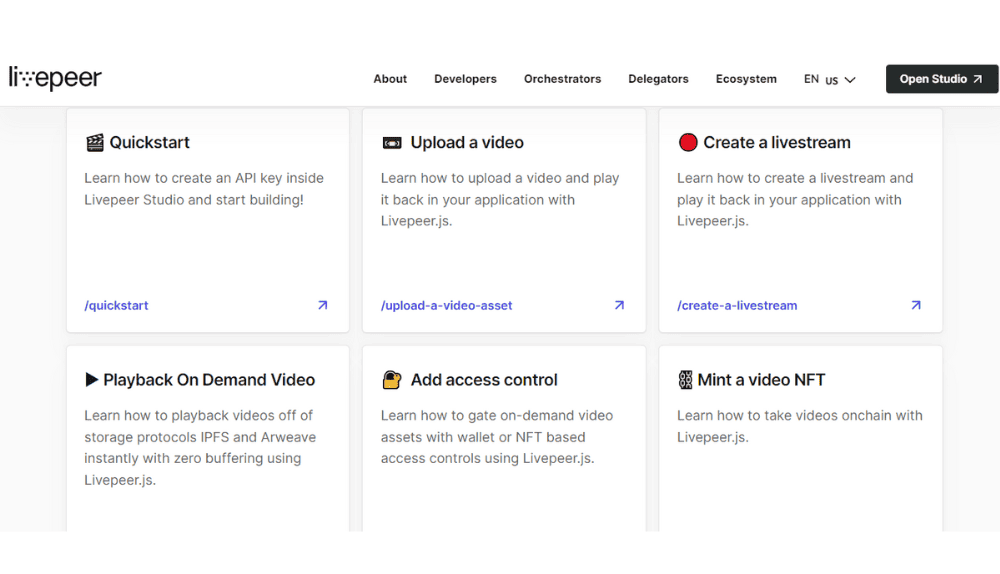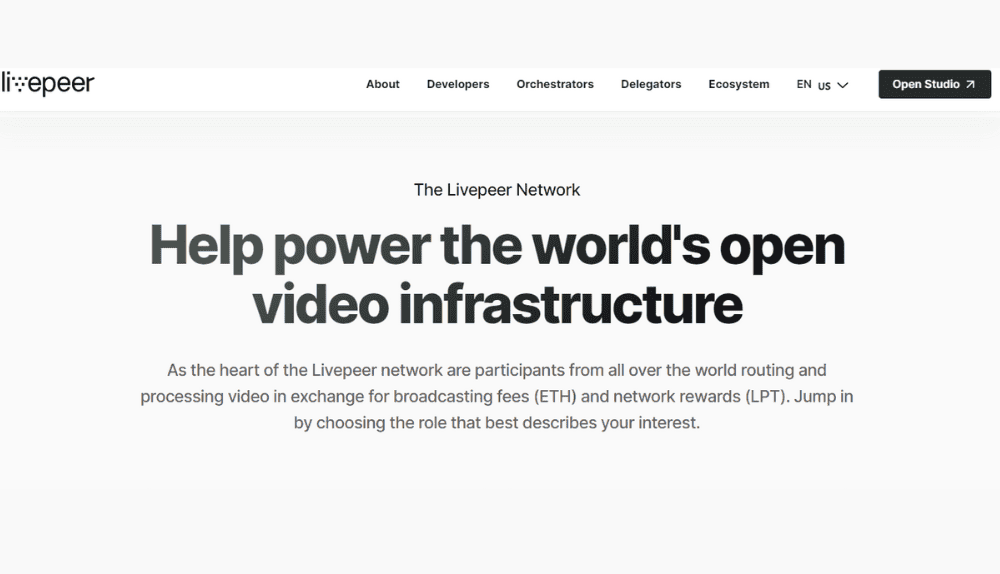A Beginner’s Guide to Livepeer (LPT)
The video streaming industry has drastically improved over recent years. A vast majority of companies are now offering these services to better entertain their customers. But the companies need to spend a hefty amount of money on transcoding to meet the rising demands of the users. Read our article about what is Livepeer (LPT) and get complete information about it.
The advent of VR and 4k video streaming has made things a lot more difficult for companies because they need to arrange a huge amount of processing power to successfully complete the transcoding tasks. Thanks to Livepeer which is trying to resolve this problem with its advanced decentralized ecosystem.
What is Livepeer (LPT)?
Livepeer is an Ethereum-based decentralized network that is designed to significantly reduce the costs of live video or on-demand video services. The platform has a strong network of users who provide their extra computing power to complete the transcoding tasks. The platform incentivizes the users for their contribution.
It ultimately helps with improving the decentralization of the network. The users can support the transcoding process by providing computing resources like CPU, GPU, and internet bandwidth. Thus, the platform can provide easily affordable video streaming services compared to traditional platforms.
Livepeer Founders
Livepeer was introduced by Eric Tang and Doug Petkanics in 2017. Unlike other crypto projects, the Livepeer team didn’t organize a token sale for its token distribution. Instead, the tokens were distributed among the founders, early team members, and the community. A significant amount of LPT tokens were added to a long-term development fund to ensure consistent growth of the network.
Livepeer Important Features
Livepeer offers a range of unique features to revolutionize the way video streaming is handled.

Decentralization – Livepeer eliminates the need to deal with a centralized authority. The platform has a strong network of nodes that ensures transparency by participating in different tasks. Thus, companies don’t need to worry about the security of their data.
Scalability – Livepeer network can handle a huge amount of video streaming requests at a time. The platform distributes video processing tasks across multiple nodes. Thus, it doesn’t put enough pressure on a single processing unit allowing users to enjoy a scalable environment.
Cost Efficient – Unlike traditional video streaming solutions, Livepeer doesn’t have to employ a huge amount of computing resources. Instead, it uses a distributed network of nodes to run its operations. It reduces the overall cost of video streaming and transcoding by using the idle computing resources of the participating nodes.
Incentive Mechanism – Livepeer has introduced an incentive mechanism to encourage more users to contribute to the process. Node operators are recognized as Orchestrators in this ecosystem. They’re required to stake their Livepeer tokens to become a node operator. It automatically establishes the integrity of the network.
Censorship Resistant – The platform isn’t controlled by a single entity or a network of users. Thus, the users don’t have to worry about censorship or other such issues they usually experience in traditional video streaming platforms. The content creators get the freedom to share their ideas without any restrictions.
API Integration – The developers can easily integrate the platform’s video infrastructure into their applications with the help of its Application Programming Interface. Thus, the DApp developers can use a scalable and cost-efficient environment for building video streaming applications.
Interoperability – Livepeer is compatible with other Ethereum-based decentralized applications. Thus, it opens a myriad of opportunities for seamless integration with other decentralized applications.
Community Governance – Livepeer network is governed by the community members. The LPT token holders can vote on several proposals for the future development of the project.
How Does Livepeer Work?
Livepeer uses a delegated Proof-of-Stake consensus mechanism to run its operations smoothly. Its node operators are called Orchestrators. The orchestrators need to stake their LPT tokens to run a node. Furthermore, they need to have a specific amount of computing resources to qualify for the process.

The users, who don’t have enough computing resources, can delegate their LPT tokens to Orchestrators. The Orchestrators earn LPT tokens as a reward for their contribution. The Orchestrators can also mine ETH tokens while they’re helping with the transcoding process. A small portion of LPT and ETH rewards are distributed among delegators for their contribution.
Livepeer Tokenomics
LPT is the native token of the Livepeer network that the users need to pay while initiating a video stream. The node operators need to stake their LPT tokens to secure the network. With a circulating supply of 28 million tokens, LPT has a market cap of $149 million. It ranks among the 200 best cryptocurrencies in terms of market cap.
Conclusion
Livepeer presents a promising solution to the challenges faced by the video streaming industry. By leveraging decentralized technology, Livepeer offers a cost-efficient and scalable platform for live and on-demand video services. Its network of nodes ensures decentralization, security, and censorship resistance, empowering content creators and providing users with a seamless streaming experience.
With its incentive mechanism, API integration, and interoperability with other Ethereum-based applications, Livepeer is poised to revolutionize the way video streaming is handled, ushering in a new era of affordable and accessible content delivery. Feel free to get in touch with us if you need more information about how the Livepeer network works.
We also invite you to subscribe to our weekly newsletter if you need regular updates about Bitcoin and the crypto market.











